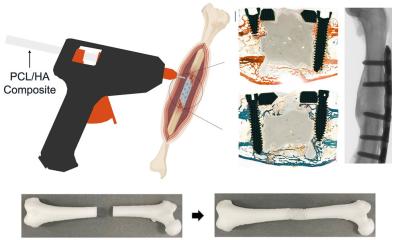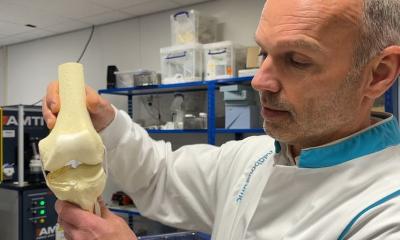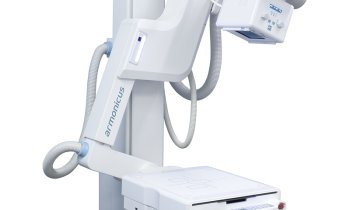Video • Arthroplasty
"Smart" knee implant could be the future of joint replacements
Smart knee implants may soon be a reality thanks to research conducted by a team including faculty at Binghamton University, State University of New York.
Knee replacement surgery is the most common joint replacement procedure, with the number of surgeries increasing every year. Many of those surgeries are done to replace an older implant or one that has worn out. Increasingly, this surgery is being performed for younger, more active patients who are faced with a dilemma. When they undergo the surgery, they are expected to remain physically active for their overall health, but that activity can also wear down the new implant. Often, doctors don’t know if patients are overexerting themselves until they begin to develop symptoms. By that point, the damage to the implant has already been done. For a young patient, going through knee replacement surgery every five or 10 years is a daunting task, but finding the perfect balance of activity levels to maintain the integrity of the implant has been equally daunting.

Researchers decided it was time to create smarter knee implants that could monitor changes in activity as they happened. Assistant Professor Sherry Towfighian from Binghamton University served as the lead principal investigator on the study, which has been supported by the National Institutes of Health (NIH). “We are working on a knee implant that has built-in sensors that can monitor how much pressure is being put on the implant so doctors can have a clearer understanding of how much activity is negatively affecting the implant,” said Towfighian. The sensors allow doctors to tell patients when a certain movement has become too much for the implant so patients can quickly adjust and avoid further damage to the implant. It helps them find the sweet spot of activity for each particular patient.
While the sensors solved one problem, they brought in another. The researchers did not want to power the sensors with a battery that might need to be replaced periodically and therefore, defeat the purpose of a smart implant. Instead, they worked on an energy harvesting mechanism that can power the knee implant from motion. Wathiq Ibrahim, a postdoc in Towfighian’s group, developed a prototype of the energy harvester and tested that under a mechanical testing machine to examine its output under equivalent body loads. They used triboelectric energy, a type of energy that is collected from friction. Once someone walks, the friction of the micro-surfaces coming into contact with each other can be used to power the load sensors.
The sensors will tell us more about the demands that are placed on implants, and with that knowledge, researchers can start to improve the implants even more
Sherry Towfighian
Associate Professor Emre Salman from Stony Brook University designed the circuit and determined that it would need 4.6 microwatts. The preliminary testing showed the average person’s walk will produce six microwatts of power, more than enough to power the sensors. This part of the research was complemented by Assistant Professor Ryan Willing from the University of Western Ontario, who worked on the implant design and the package of the sensor. These smart implants will not only give feedback to doctors but will help researchers in the development of future implants. “The sensors will tell us more about the demands that are placed on implants, and with that knowledge, researchers can start to improve the implants even more,” said Towfighian.
Towfighian is hopeful that the combination of activity sensors and a self-powered system will increase the life span of knee implants and reduce the need for follow-up surgeries. For young patients looking at the possibility of knee replacement surgery, this development has the potential to be life-changing.
Source: Binghampton University
30.01.2019











